Post 1978, after a flurry of 07-16 incomings and the arrival of a new batch of thirty-seven 07-32s, Plasser's 07 series tampers rapidly became a very familiar sight across the British Rail network.

Three classic British Rail era Plasser & Theurer machines in a lineup at Wolverhampton (WolverTampton?) on 11th January 2001. At the front, 07-16 No. 73241. More details on this lineup later in the post.
How would rail enthusiasts treat a train that they couldn't travel on, couldn't underline in their spotting books, and whose fleet number they struggled even to find? Well, as is evidenced in the amazingly scant coverage of tamping machines on the World Wide Web, the vast bulk of railfans would comprehensively ignore it.
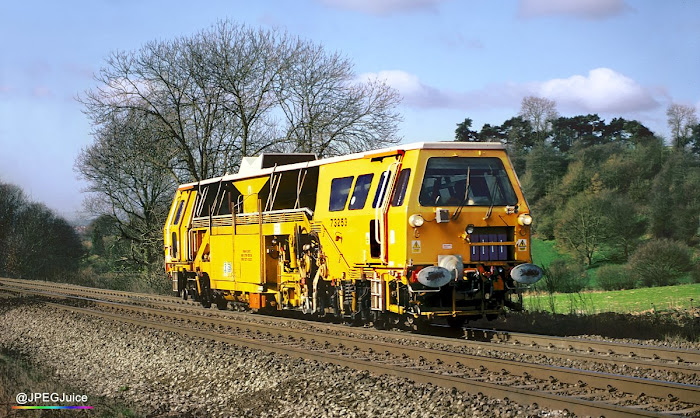
The now classic Plasser & Theurer 07 series tamper - that's the inverted-skip-shaped specimen you see above in the guise of 73253 - established itself as the invisible apparition of the Peter Parker era. If all you'd seen in a 15 minute lineside session was a P&T 07-16, and a mate jogged up with the phrase: “Anything been though?”, he'd most likely be met with the answer: “Nah.”
In the 1976 to 1983 period of Sir Pete's reign, the tamping machines' numbers were tiny and all but hidden. It took me about two years to realise they even had numbers. The machines weren't listed in the pocket books. They were just these very odd-looking yellow things that spotters stared straight past. Odd enough to provoke a first-sight reaction of : “Whoa, what's this??” But irrelevant enough to the spotting collective to prompt the dismissive, slap-back reply: “Nothing. Only a tamper.”

Refusing to lie down - Plasser & Theurer 07-32 tamper No. 73418, now with Fastline branding and post-privatisation livery, basking in a rare burst of sunshine in the washout summer of 2007. The location is Stourbridge Junction, and the date 18th July.
Although tampers and track machines have gained more of an identity in the privatised era, and frankly the regular traffic has become so monotonous that even a static pump truck would seem exciting today, the tampers still don't really have a visible fanbase.
The tamping machine is vital to the upkeep of the modern railway, automating the task of evenly bedding out the track with supporting ballast, and correcting any deformations for perfect rail alignment. Tamper veterans Plasser & Theurer have claimed partial credit for milestone speed records, where the flawless condition of the track has helped facilitate new heights in performance. For example, the record-breaking 380 kilometres per hour TGV run in February 1981, the new world speed record of 406.9 kilometres per hour on the Würzburg - Fulda line in May 1988, and the TGV's superseding speed record of 515.3 kilometres per hour, in May 1990.
The tamping machines may be unsung among enthusiasts, but they have played an incredibly important role.
PRODUCTION OF THE MODERN PLASSER & THEURER TAMPER

The Plasser & Theurer 07 series tamper/liner launched as a concept in 1970. These machines were game-changing in that they packaged the track tamping and lining capabilities within a twin-cab design that had the rail-roaming convenience of a single car DMU. Indeed, in some ways Plasser's 07 series tamper could be considered to have established and furthered some of the parameters for second generation DMU design - most obviously, use of the Cummins NT855 engine.
Plasser & Theurer's 07 series tampers - surely the vehicles that nearly all 50+ enthusiasts will recall as their first sighting of a tamping machine - were built right through the 1970s and into the 1980s. British Rail's familiar 07-16 vehicles were produced in evolving batches between 1971 and 1978. They were numbered between 73200 and 73279, although some originally had completely different, six-digit BR departmental series numbers - eight characters in full, with the old 1970s “DB” prefix.
But BR's adoption of the 07 Series was initially slow - probably because they'd acquired a lot of tamper/liner equipment immediately prior to the 07s' introduction, around the cusp of the '60s/'70s decades. Accordingly, the bulk of BR's P&T 07s hailed from the second half of the 'seventies. Post 1978, after a flurry of 07-16 incomings and the arrival of a new batch of thirty-seven 07-32s, Plasser's 07 series tampers rapidly became a very familiar sight across the British Rail network. In '76 they'd still been a major eye-opener. By '79 they were in yawn territory.

The classic British Rail 07-16 tamper/liner, made by Plasser & Theurer, is now a nostalgic signpost, reminding us of the late 1970s, the 1980s and the 1990s. It wasn't until around 1999 that they really showed signs of being nudged out of the picture. The photo above, taken at Bankers Bridge, Bromsgrove on 1st September 1999, shows a new Pandrol Jackson Stoneblower en route north, as an 07 series tamper/liner nestles in the tamper siding.
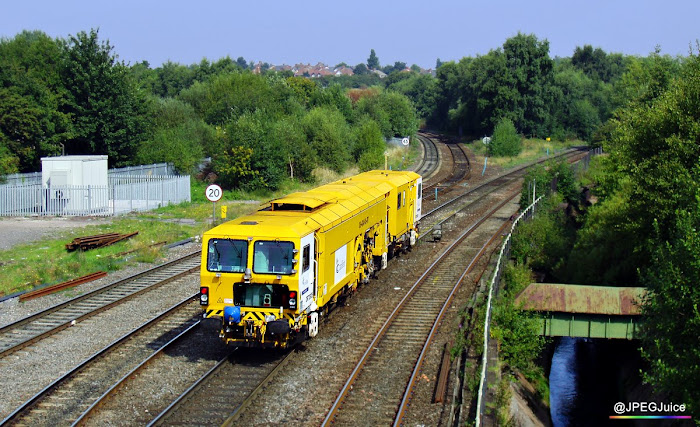
Although Plasser's 08 Series first appeared in 1979, British Rail did not acquire them in significant volume in the 1980s, and did not begin phasing out the 07s until much later, when the new 08 Series versions became compliant with the Railway Group Standard in the late 1990s. From that point forward, the era of the new track machine boomed, with over 40 tampers in the 08 series alone delivered to UK privatised railways between 1997 and 2004. One such tamper is seen above: DR73935 - an 08-4x4/4S-RT from 2003. It has the original all yellow livery in the above shot, with Carillion branding. It later went to Colas.

And here's an earlier version of the Plasser 08-4x4/4S-RT. DR73905, seen above at Defford in Amey-branded yellow livery, is one of the earliest examples of the privatised railway's new generation of tampers, built in the late 1990s. It comes from the batch numbered DR73904 to DR73910, delivered between 1997 and 1999. DR73905 was another 08 Series tamper/liner that subsequently went to Colas.
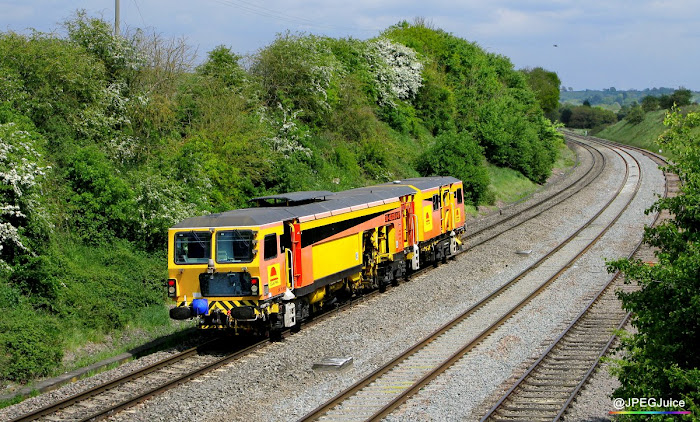
Sporting Seco colours and updated Colas branding, this is the 1999 Plasser & Theurer 08-16(32)U-RT No. DR73805, as photographed at Stoke Prior in May 2010.

The Plasser & Theurer 09 Series launched in the mid 1980s. BR did acquire more of these in the '80s than they did the 08 Series - taking on board one 09-16, and seven 09-32s, one of which - 73105 - is shown above in January 2001, wearing all yellow livery with Centrac branding. But a higher number came into traffic post-BR than during the nationalised era.

Above, you can see a later Plasser & Theurer 09 Series tamper. This is 73115 - a 2006 09-3X-D-RT tamper/liner, as seen in plain Network Rail yellow in 2009. Notice how different the design is in the era of Railway Group Standards - much less "personality" compared to the 1988 appearance of 73105.
OTHER NOTABLE TAMPERS AND RELATED VEHICLES
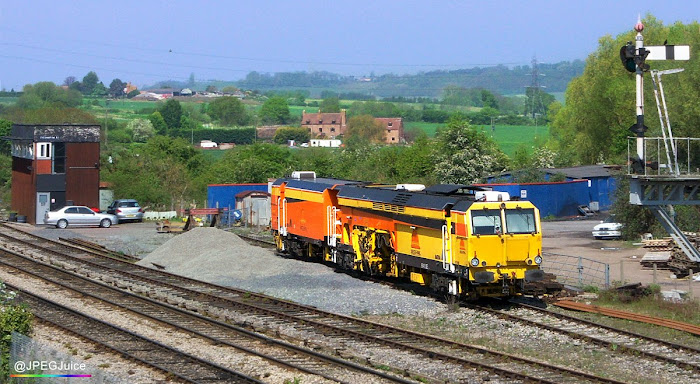
The highly advanced Matisa B41UE tampers have been kept busy since eleven of them arrived between 2003 and 2006. They 're another part of the major new-gen tamper boom that killed off the life-expired 07 Series. Above, one of the two Colas B41UEs - DR75406 - is seen at Evesham in May 2008, still carrying Seco Rail branding.
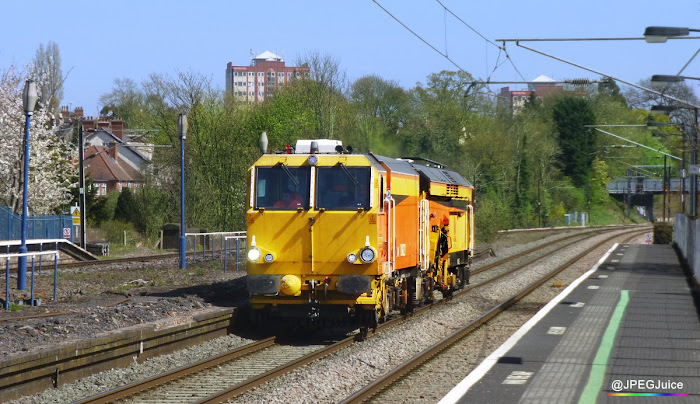
And the other of the two Colas B41UEs - DR75407 - appears above in a capture from Northfield in April 2014.

But a much more retro artefact is the Plasser & Theurer USP 5000-C ballast regulator, built between the mid 1970s and mid 1980s, to number 36 examples in total. They don't have full tamping capabilities. They only control the profile of the ballast, but they're useful employed as part of the overall tamping process, and there's one sandwiched between two tampers in the January 2001 Wolverhampton shot at the top of the post. You can see one on its travels above, in a scene from the Lickey Incline on 5th March 2001, when the location was still 100% unobstructed by lineside clutter.
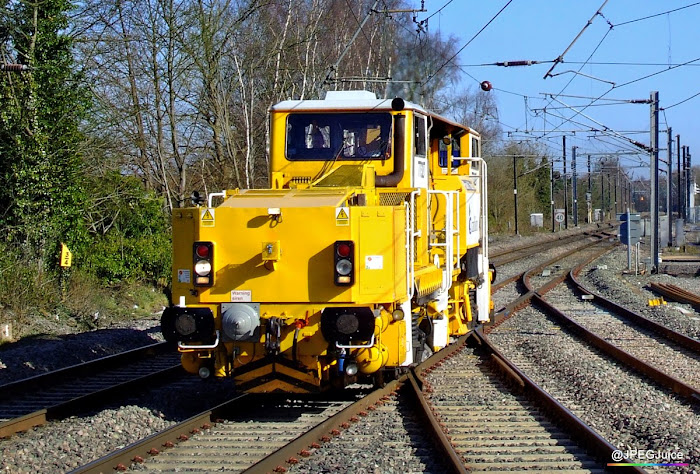
This later shot of a USP 5000-C ballast regulator shows No. 77327 at Barnt Green on 13th March 2007. You can see that the old headlights have gone, and modern cluster lights have been fitted to replace them.
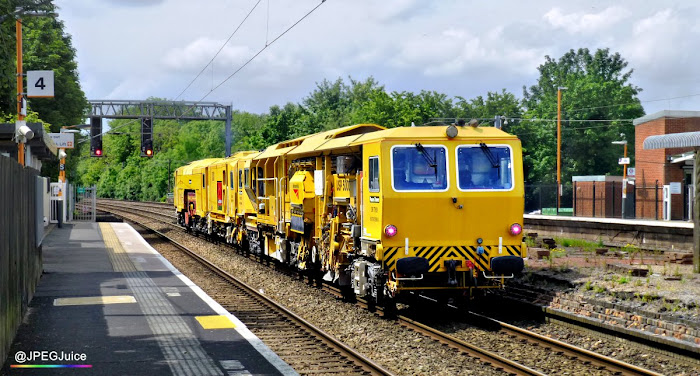
The modern incarnation of the USP 5000 ballast regulator is shown above, in the shape of Network Rail's DR77909. The unit is pictured travelling from Crewe to Taunton in June 2021, with 09-3X-D-RT tamper/liner No. DR73120.
THE FUTURE?
Tamping and track machines are likely to win more interest as time passes, and their history becomes richer. Compared to locomotives, wagons and coaching stock, the convenient, mobile, bi-directional tamper is still a relatively new development - only just passing its 50th birthday. That means we have a lot less tamping unit heritage than we have loco heritage, and the historical timeline as regards tamper spotting is still in its relative infancy.
But we've already seen the twilight of the first generation of modern tampers, and the technology evolves fairly quickly, so a lot of the machines around today might be superseded by faster-working and more economical replacements within a decade.
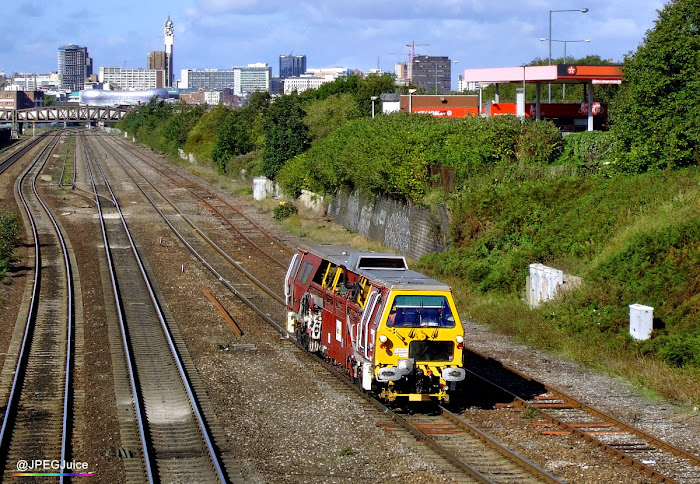
Plasser & Theurer 07 Series oldie at Small Heath on 7 October 2006.
When I'm out photographing I commonly witness photographers departing after a loco-pass - even when informed that there's an interesting tamper close behind. If you take rail photos, consider that disinterest an opportunity to record something at a time when, still, few other people care to record it.